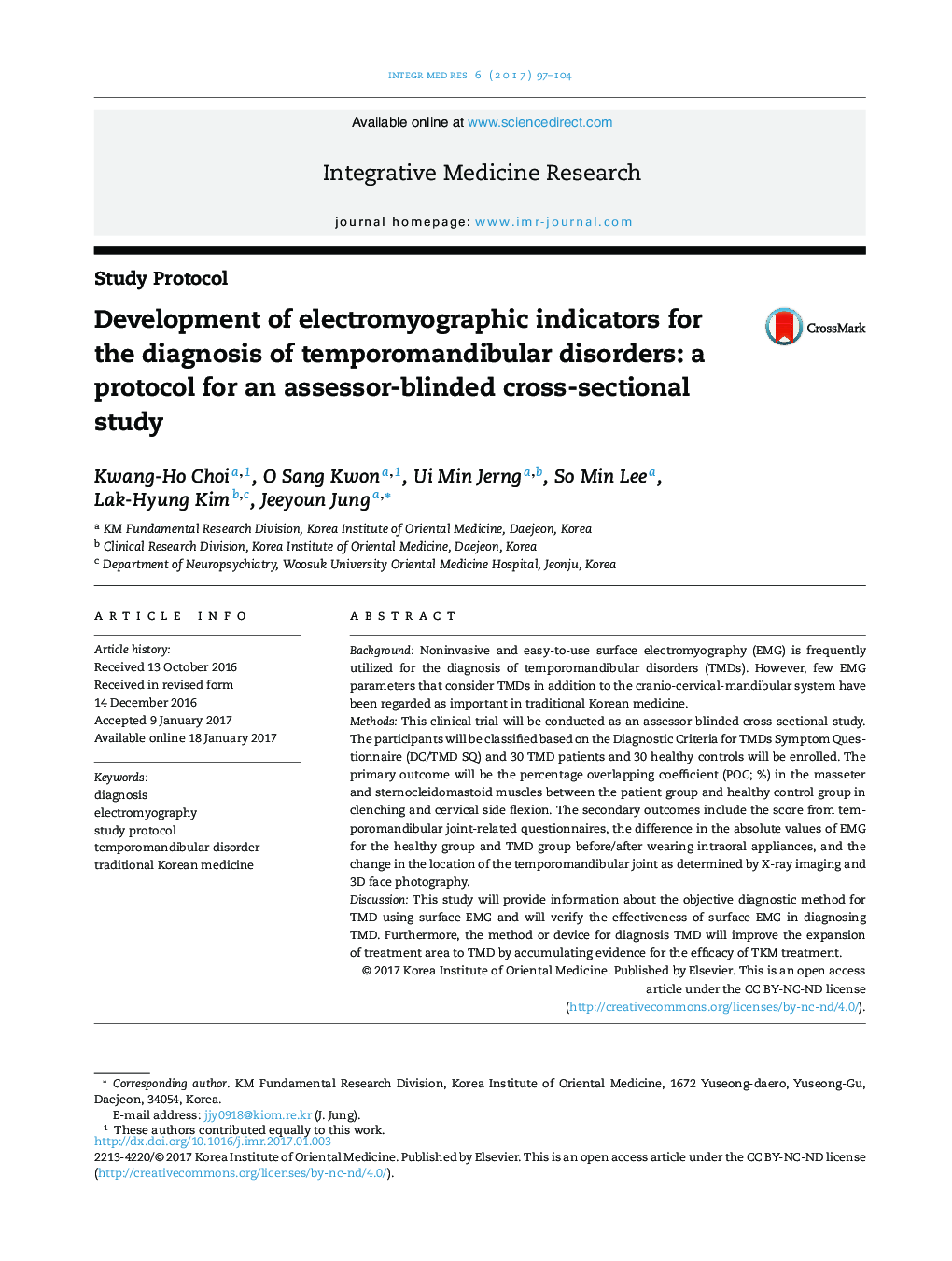| Article ID | Journal | Published Year | Pages | File Type |
|---|---|---|---|---|
| 5635130 | Integrative Medicine Research | 2017 | 8 Pages |
BackgroundNoninvasive and easy-to-use surface electromyography (EMG) is frequently utilized for the diagnosis of temporomandibular disorders (TMDs). However, few EMG parameters that consider TMDs in addition to the cranio-cervical-mandibular system have been regarded as important in traditional Korean medicine.MethodsThis clinical trial will be conducted as an assessor-blinded cross-sectional study. The participants will be classified based on the Diagnostic Criteria for TMDs Symptom Questionnaire (DC/TMD SQ) and 30 TMD patients and 30 healthy controls will be enrolled. The primary outcome will be the percentage overlapping coefficient (POC; %) in the masseter and sternocleidomastoid muscles between the patient group and healthy control group in clenching and cervical side flexion. The secondary outcomes include the score from temporomandibular joint-related questionnaires, the difference in the absolute values of EMG for the healthy group and TMD group before/after wearing intraoral appliances, and the change in the location of the temporomandibular joint as determined by X-ray imaging and 3D face photography.DiscussionThis study will provide information about the objective diagnostic method for TMD using surface EMG and will verify the effectiveness of surface EMG in diagnosing TMD. Furthermore, the method or device for diagnosis TMD will improve the expansion of treatment area to TMD by accumulating evidence for the efficacy of TKM treatment.
